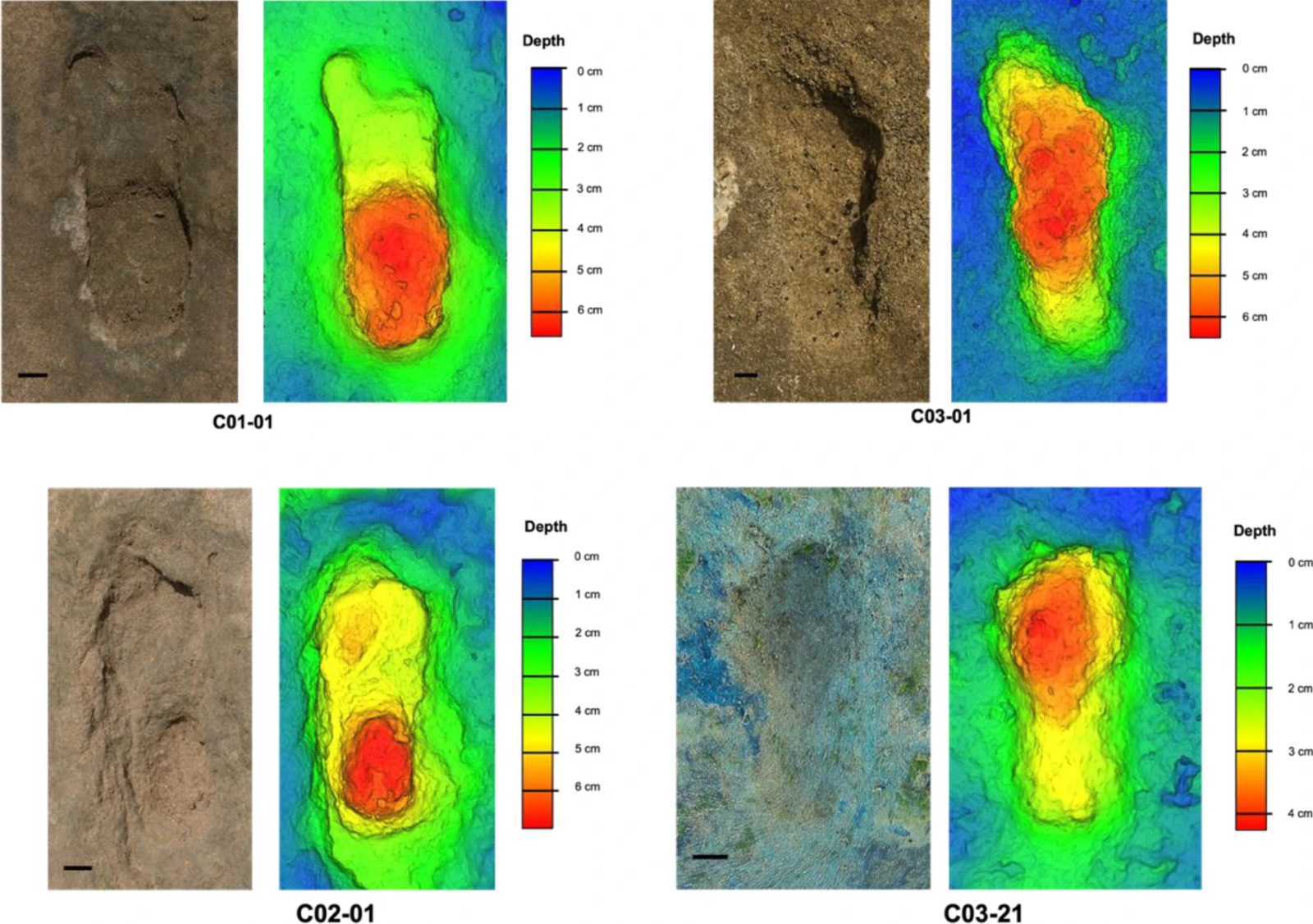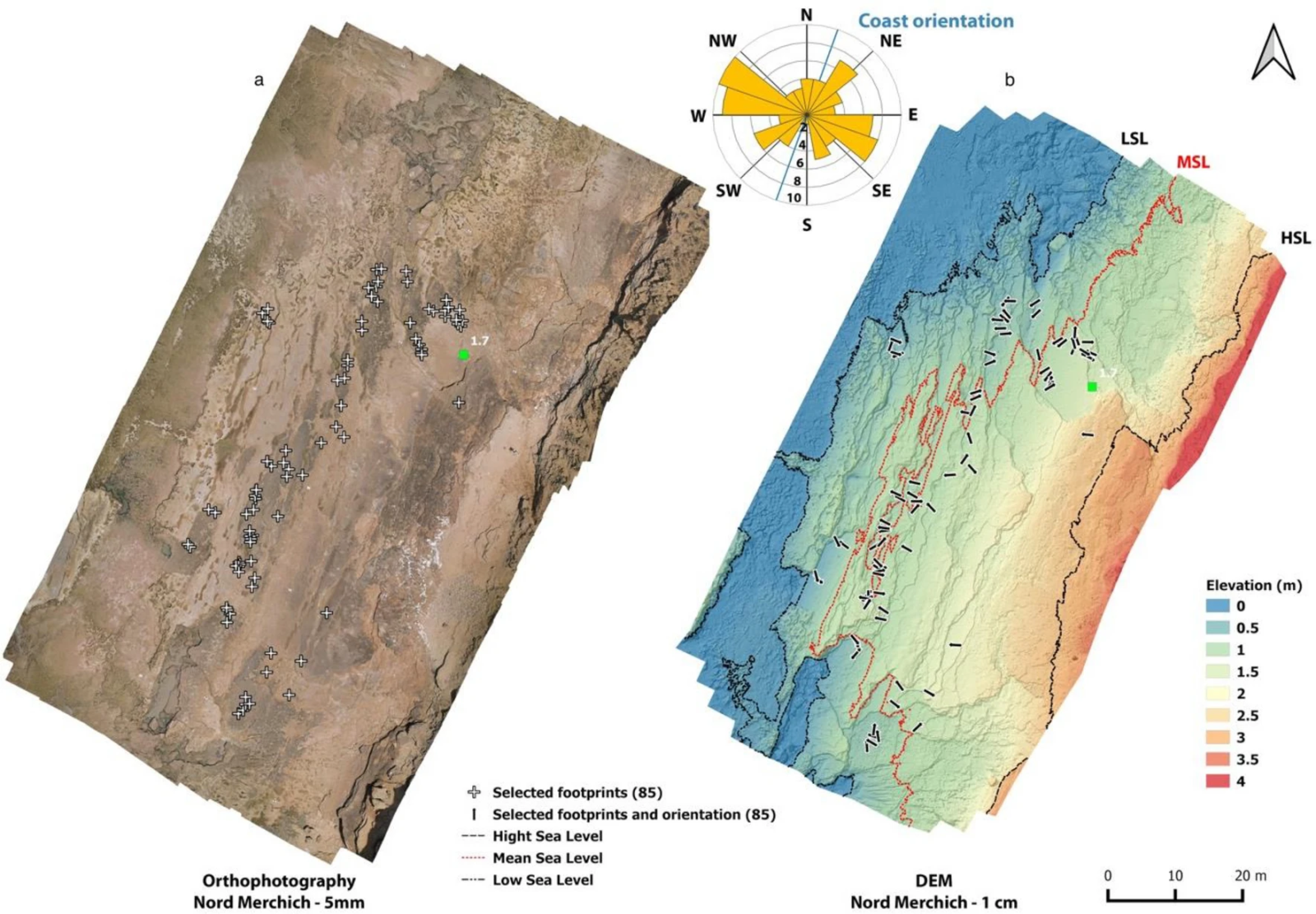Discovery of These 90,000-Year-Old Human Footprints in Morocco With Exceptional Preservation
Follow us on Google News (click on ☆)

Hominid footprints of Larache.
These footprints were uncovered near the northern tip of North Africa in 2022, while the team was studying rocks on an adjacent beach. The discovery, published on January 23 in the scientific journal Scientific Reports, represents a unique site of human traces in North Africa and the southern Mediterranean, revealing two pathways left by a group of at least five Homo sapiens.
To date these footprints, researchers used optically stimulated luminescence, a method that determines when specific minerals near an artifact were last exposed to light or heat. The results suggest that these footprints date back to approximately 90,000 years ago, during the Upper Pleistocene, also known as the last ice age, which ended about 11,700 years ago.
The exceptional preservation of these footprints is attributed to several factors, including the layout of the beach and the extent of the tides that allowed for a final preservation of the traces. The position of the beach on a rocky platform covered with clay sediments created ideal conditions for preserving the traces on the sandbank, while the tides quickly buried the beach, thus explaining the excellent preservation of the footprints.

The footprint site of Larache.
(a) Position of the footprints (white crosses) reported on an aerial photo from a drone flight (orthophotography).
(b) A digital elevation model (DEM) of the site with the orientation of the footprints. The green square represents the point at which the sediment sample was taken for OSL dating.
The compass rose shows the preferred direction of the footprints (orientation of the traces) relative to the coastline.
However, the purpose of this group's presence on the beach during the ice age remains uncertain, and future analyses of the site could reveal this information. Nevertheless, the research team must act quickly, as the ongoing collapse of the rocky platform could lead to the loss of these valuable traces.
This discovery offers a rare glimpse into the lives of the early modern humans in North Africa and raises exciting questions about their activities and movements during this ice age. The footprints on the Moroccan beach are not just witnesses to human presence; they are clues toward a deeper understanding of our distant past.